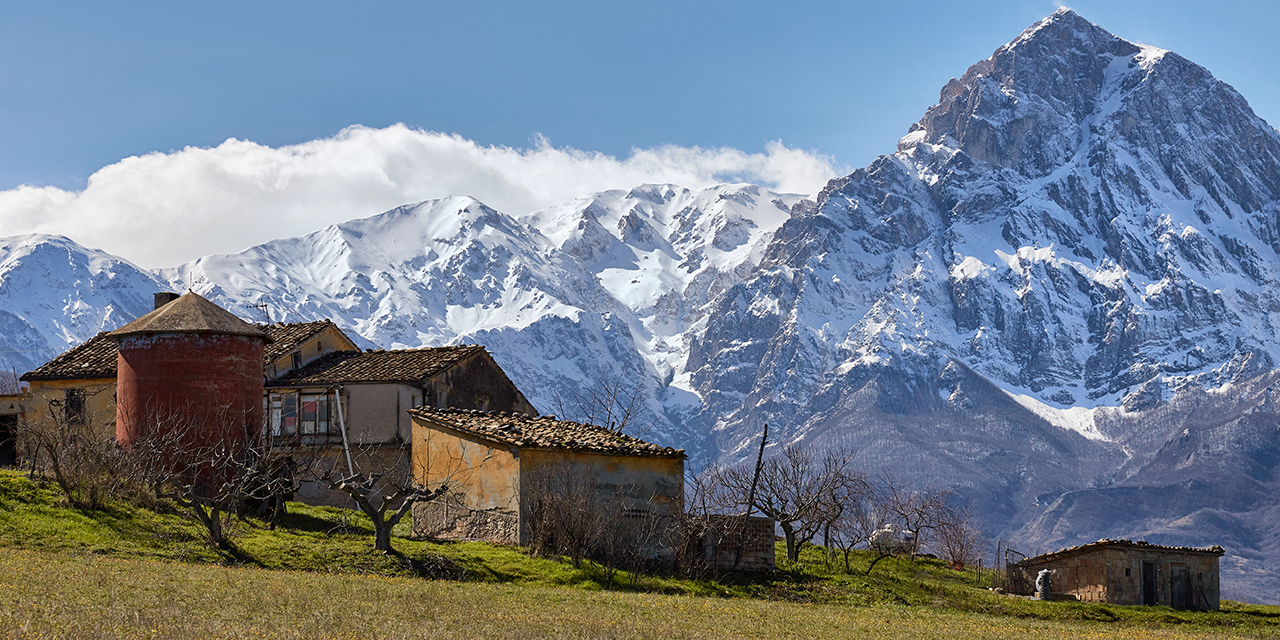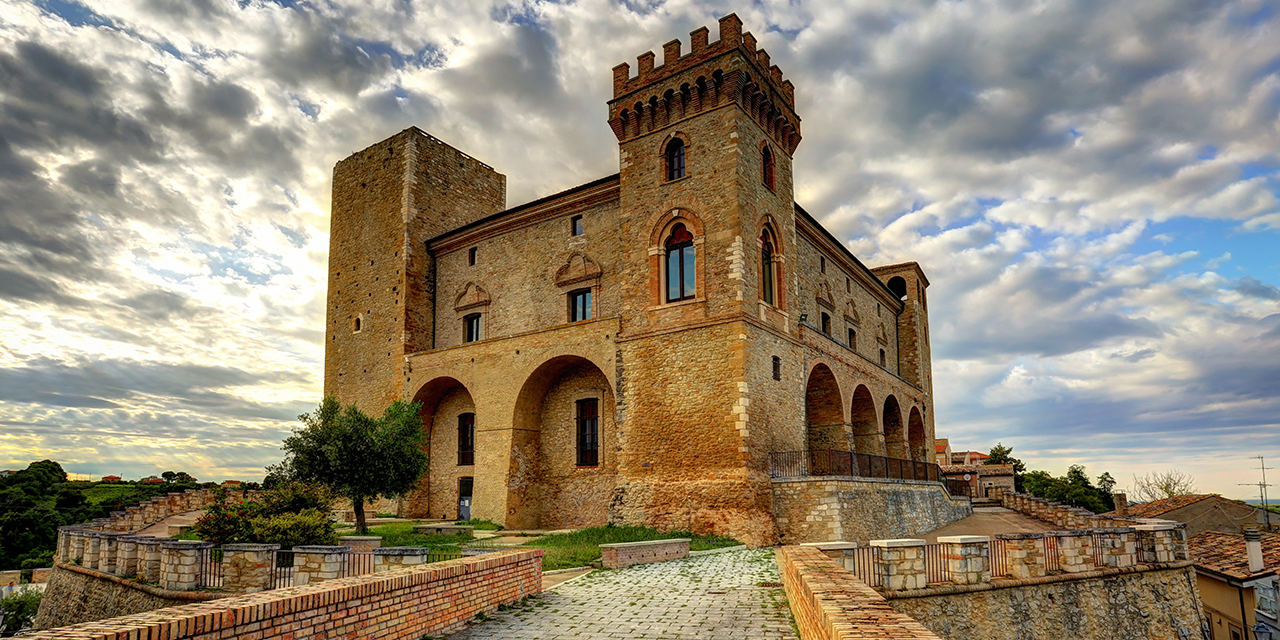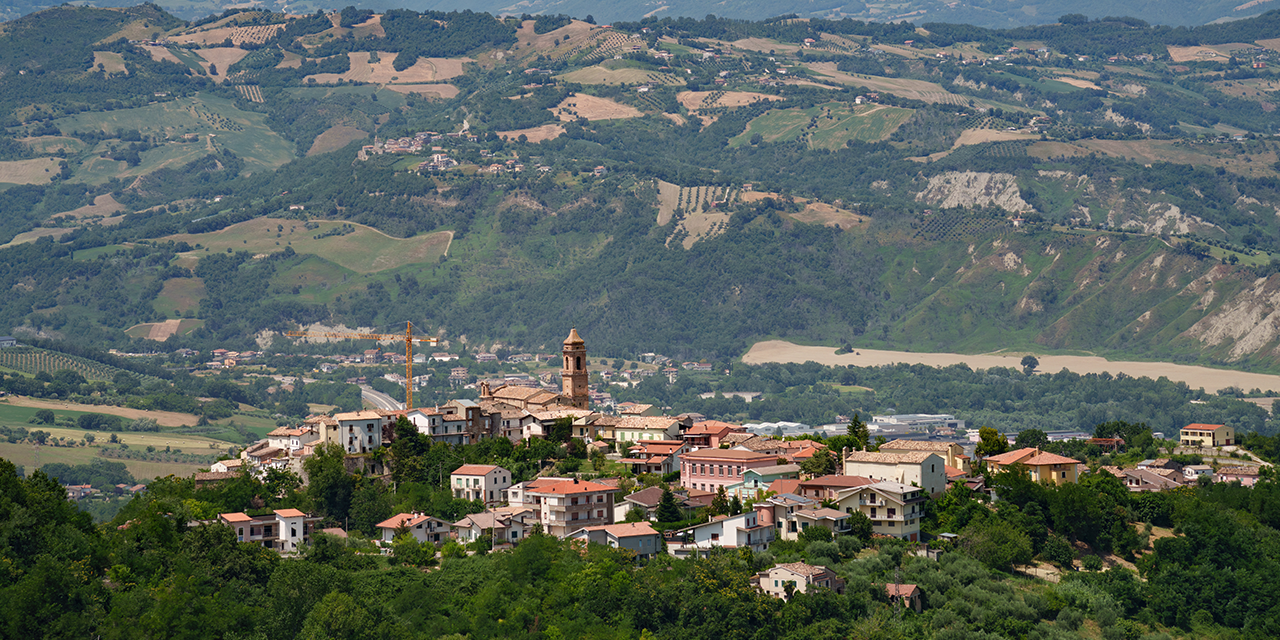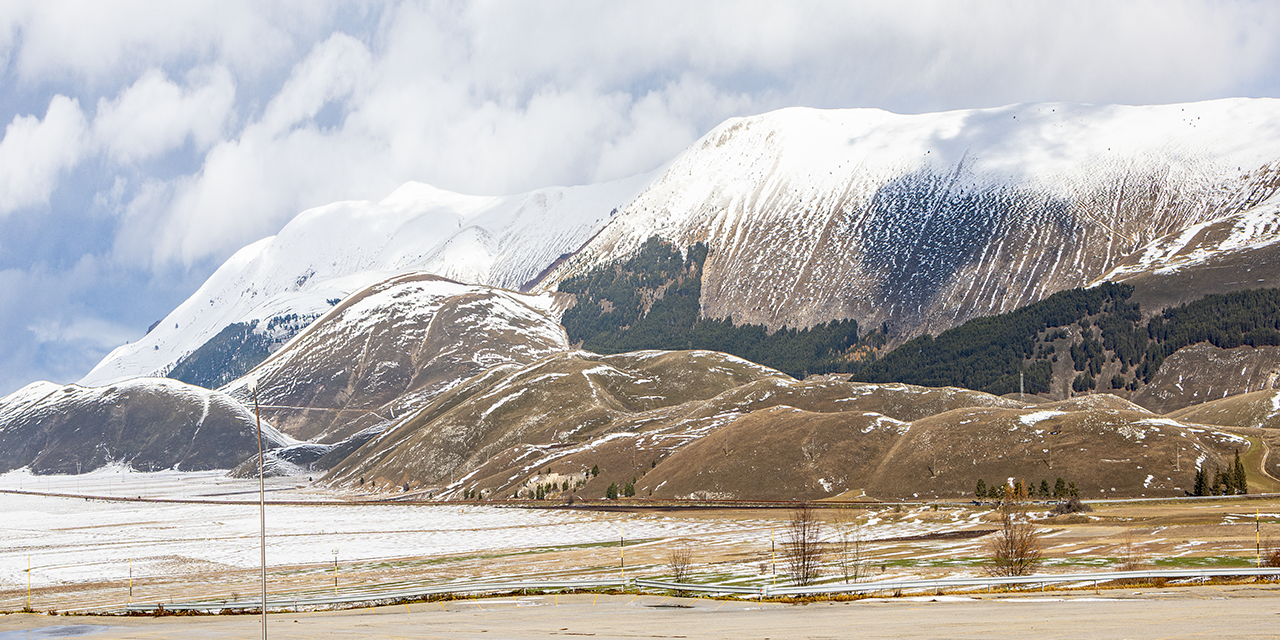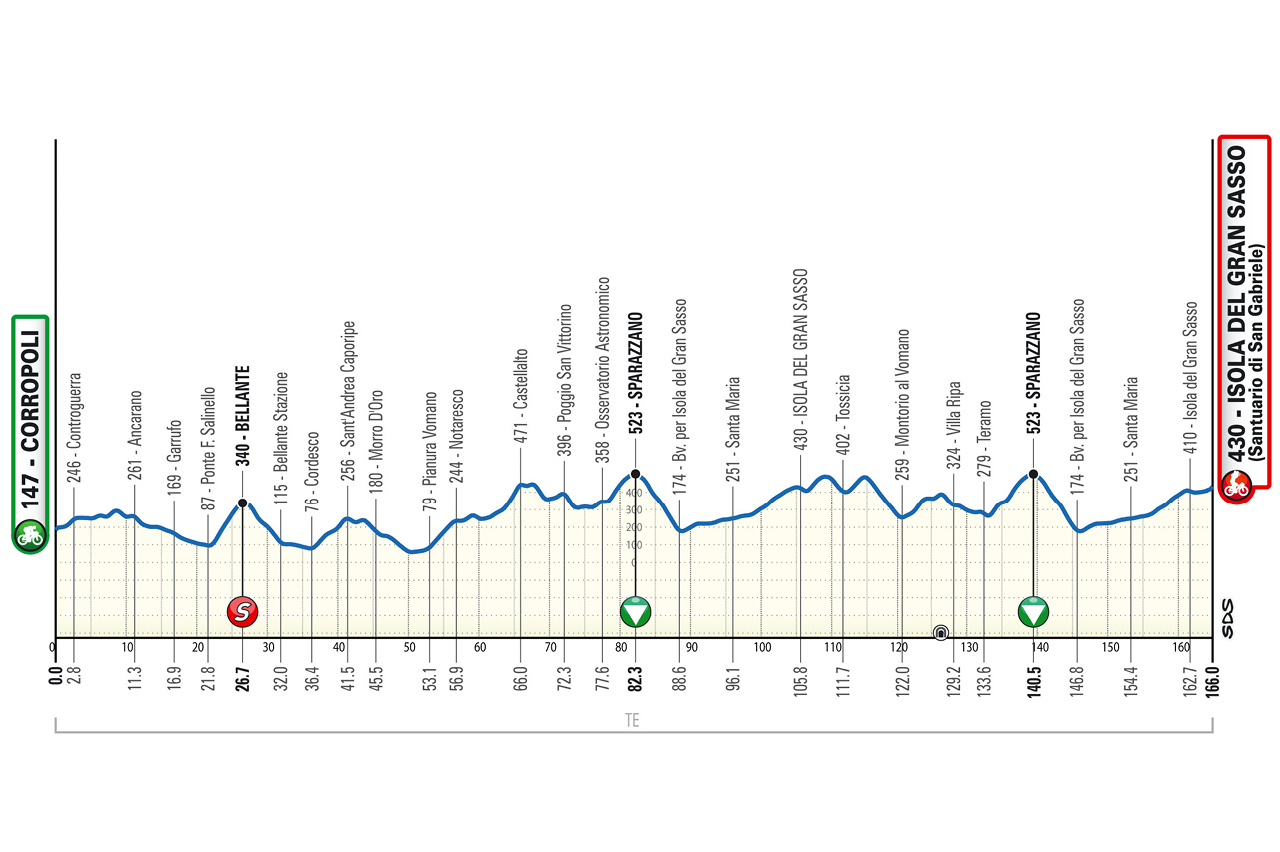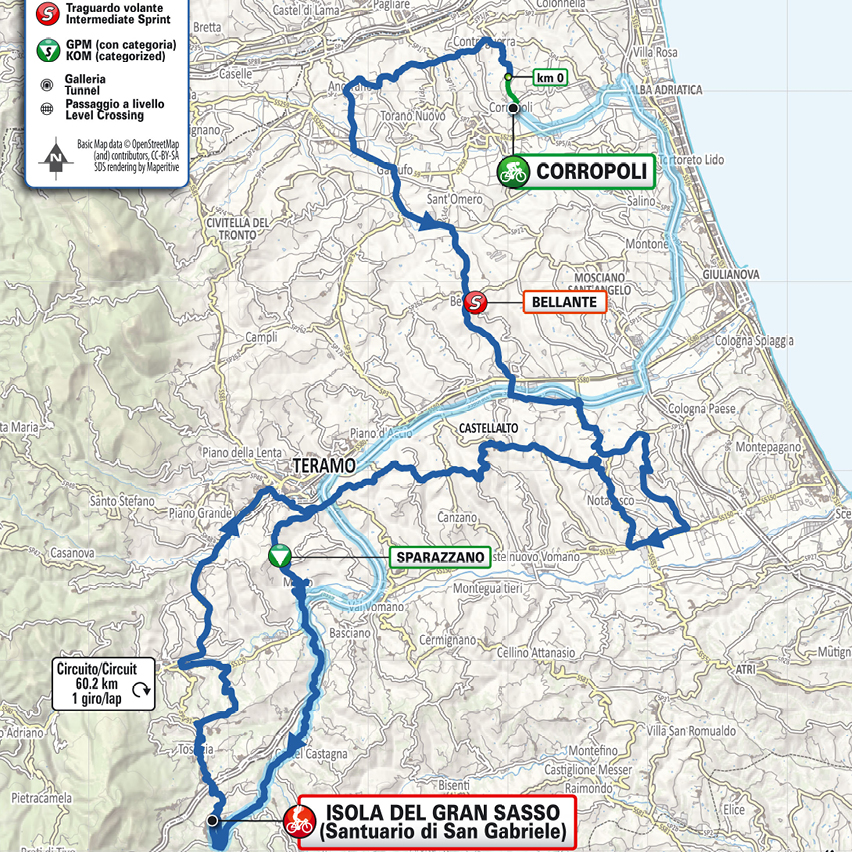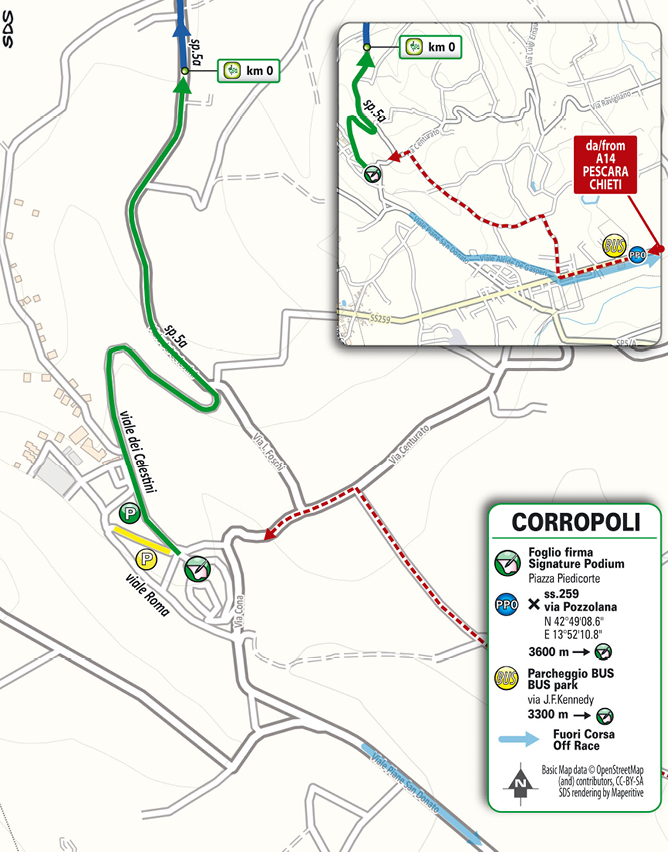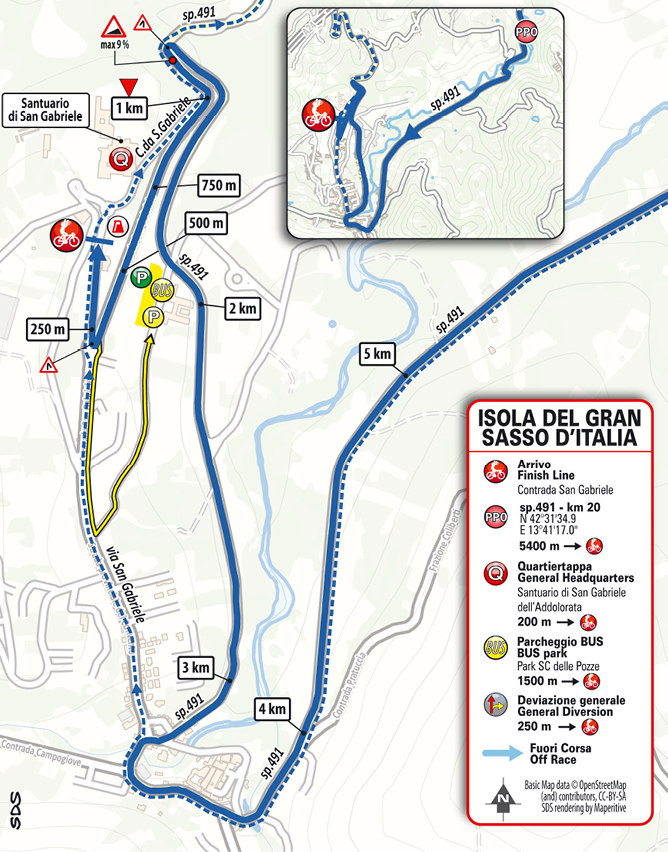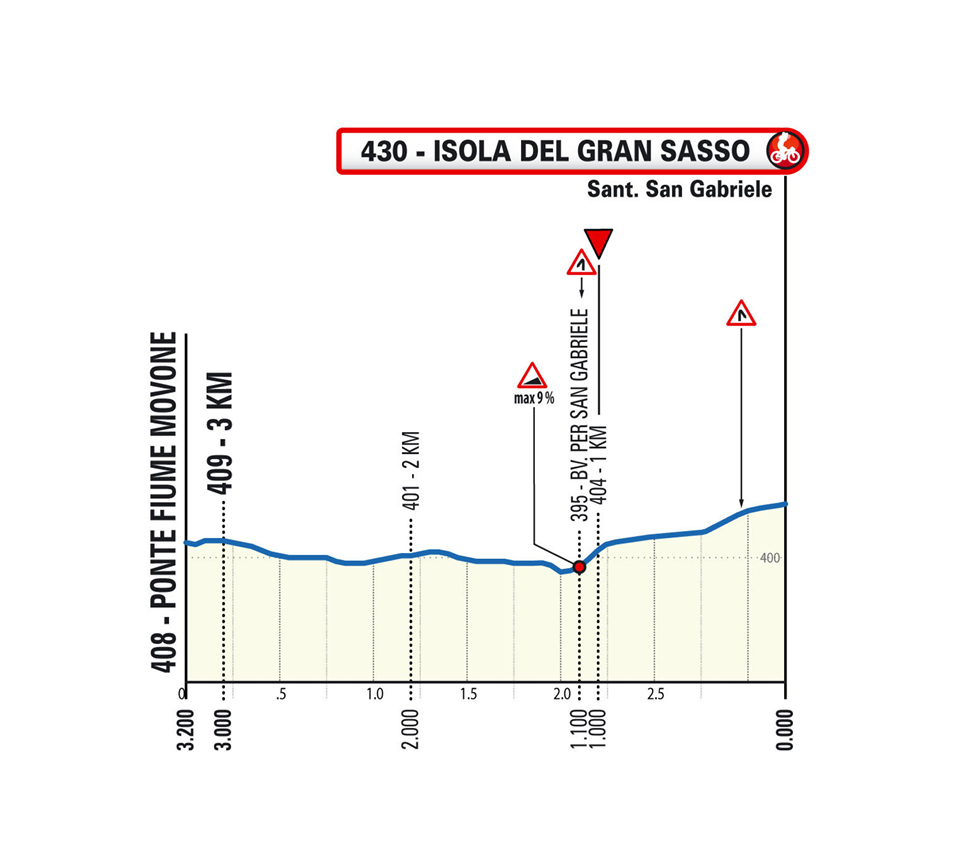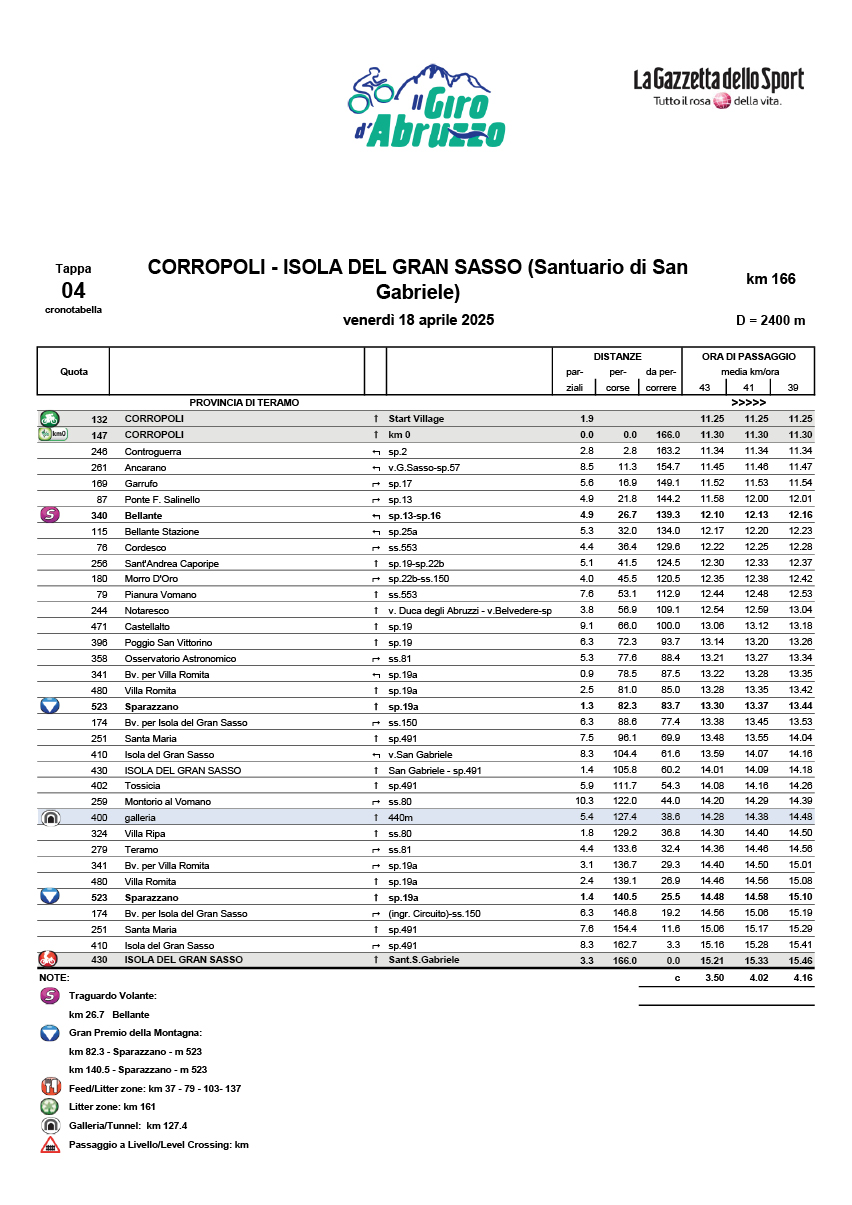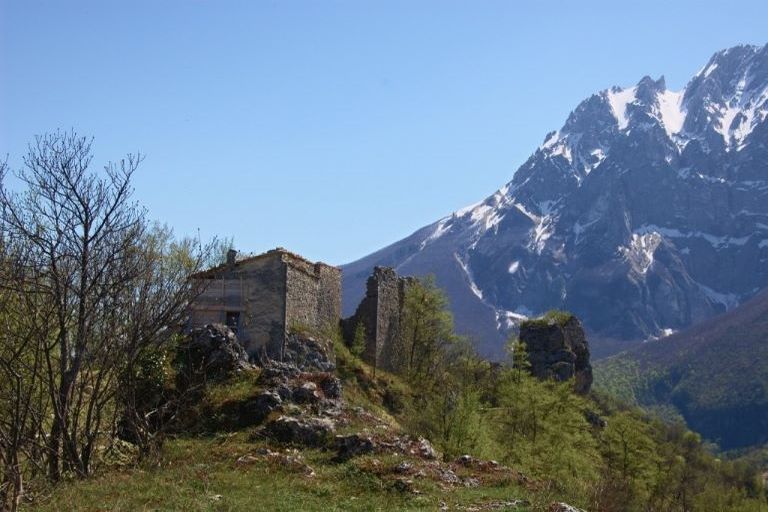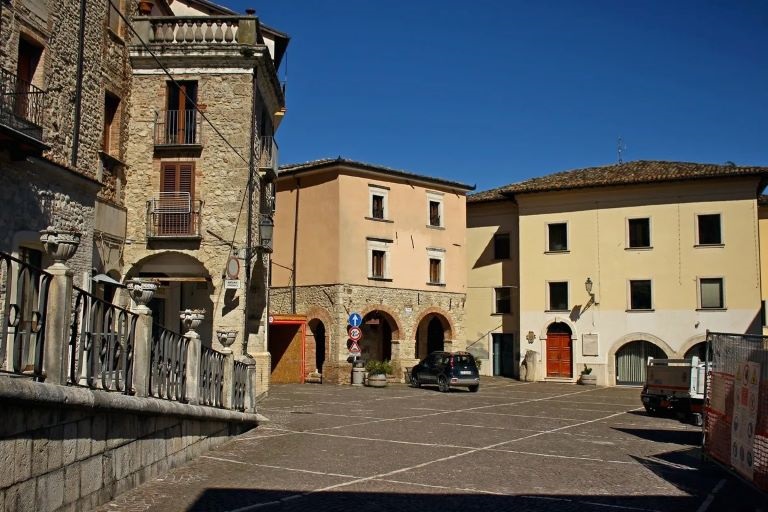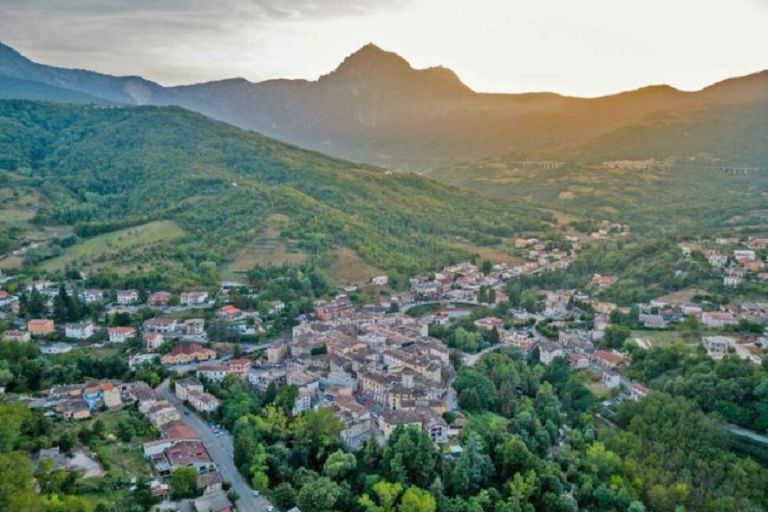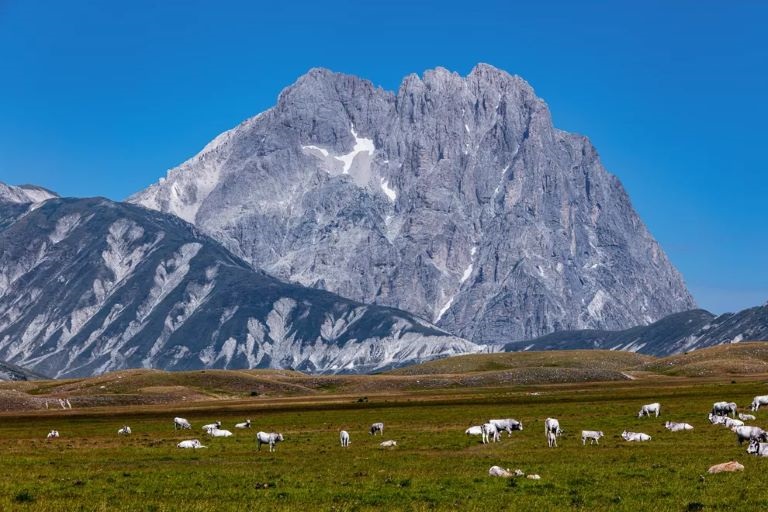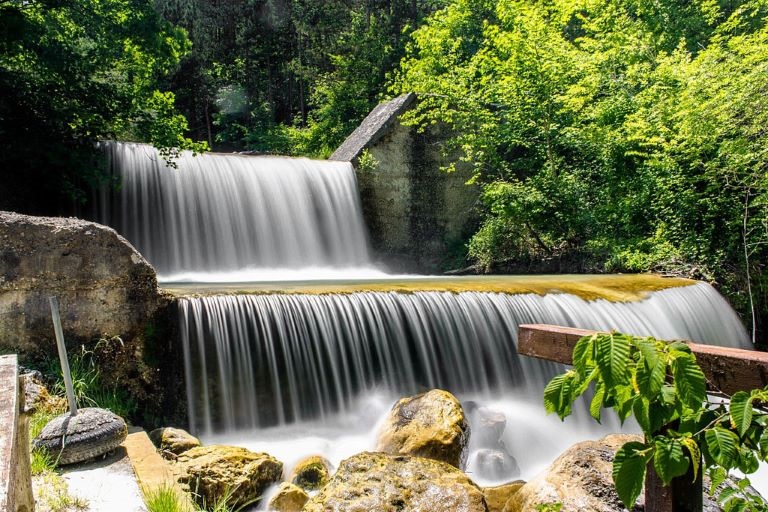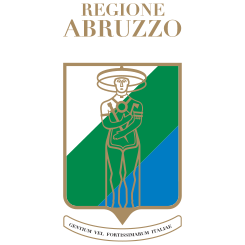learn more
technical info
profile
map
technical info
A relentless stage with a series of short climbs and descents as the race crosses from one valley to another. Eight notable climbs are tackled, varying in length and difficulty, with almost no flat terrain. The riders will pass the finish line once before heading into a 58-km hilly circuit. The finale features a gradual uphill drag.
Final kilometers
The final 3 km are a steady climb through the outskirts of the historic center. A slight descent leads into the final 1200 m. Then the road kicks up sharply (9%) for a few hundred meters before easing to around 3% all the way to the line. The finish is on a 250 m stretch of porphyry pavement, 7 meters wide.
start / finish
final kilometres
itinerary timetable
tourist info
Host city:
Corropoli
Overview
Corropoli lies in the Val Vibrata, in the province of Teramo. Over five thousand years ago, this area was home to a large Neolithic (8,000-4,000 BC) settlement, the village of Ripoli.
The abbey of Santa Maria di Mejulano, built by the Benedictine monks of the Congregatio Casinensis on the remains of a pagan temple, was one of the first churches set up in the area. Inside, it holds and preserves beautiful Baroque altars made of stucco and marble, and a 15-century polychrome terracotta statue of Our Lady of Grace. Notable religious architectures also include the 14-century parish church of Sant’Agnese (also known as the sanctuary of the Madonna del Sabato Santo), and the octagonal-shaped 18-century oratory of San Rocco.
Food
Culinary specialties of the Teramo area include maccheroni alla chitarra, capra neretese (goat stew) and the traditional pasta bake, timballo abruzzese. Food and wine enthusiasts will love taking a tasty tour along the ‘Strada del vino’ (wine route), a 30-km itinerary through Corropoli, Controguerra, Torano Nuovo, Ancarano and Colonnella.
Isola del Gran Sasso (Santuario di San Gabriele)
Overview
Isola del Gran Sasso d’Italia is an Italian municipality of 4,428 inhabitants in the province of Teramo in Abruzzo. The municipality was part of the Gran Sasso Mountain Community until 2013, the year in which all the Mountain Communities of Abruzzo were abolished.
The capital is located in a valley called “Valle Siciliana” at the foot of the Gran Sasso d’Italia, and coming from Teramo it is found at the last exit of the A24 motorway before the Gran Sasso Tunnel. The territory belongs to the Gran Sasso and Monti della Laga National Park, which is home to many animal species such as the wolf, the Abruzzo chamois, the deer, the golden eagle, the buzzard, the eagle owl, the squirrel, the wild boar and the magpie. A section of the great Gran Sasso horse trail passes through here. The view extends over the entire south-eastern part of the Gran Sasso with the Corno Grande Paretone, the highest elevation of the municipality, Monte Aquila, Monte Brancastello, Monte Prena and Monte Camicia.
Gastronomy
In the heart of Abruzzo, at the foot of the Gran Sasso, the Sicilian Valley preserves a unique gastronomic tradition, where artisanal meats and cured meats tell the story of a territory linked to biodiversity and excellence.
Pork is at the center of the local culinary tradition, offering a variety of products that satisfy even the most demanding palates:
• Porchetta: Prepared according to an ancient recipe, it is cooked for eight hours in traditional ovens. The crunchy crust retains the fat, which mixes expertly with spices and salt, giving a unique and irresistible flavor.
• Liver sausages: Typical of Gran Sasso, these sausages are an authentic and tasty specialty.
• Hams and sausages: Artisanal products that express the quality of the raw materials and the mastery of local producers. The Marchigiana race: Carni di Eccellenza IGP
In the pastures of the Sicilian Valley, the Marche cattle breed is a fundamental presence. Its meat, which boasts the IGP (Protected Geographical Indication) mark, is synonymous with superior quality, appreciated for its intense flavor and perfect consistency, ideal for traditional local dishes.
A symbol of Abruzzo cuisine, arrosticini are small skewers of lamb cooked on the grill. Simple and genuine, they represent an unmissable culinary experience for those visiting the area, accompanied by a glass of local red wine.
Among the typical cured meats of the Sicilian Valley, ventricina stands out, a spreadable cream with a strong and slightly spicy flavor. Perfect to enjoy on a slice of toasted bread, it is a real delight for lovers of intense flavors.
Another typical dish is the Virtù Teramane: A Dish of the Abruzzese Tradition.
In the heart of Abruzzo, precisely in the city of Teramo, one of the most representative dishes of the local gastronomy is born: Le Virtù Teramane. This spring soup, rich in legumes, seasonal vegetables, beef and poor cuts of pork, is a symbol of tradition and peasant culture, which has its roots in centuries of history. Its preparation, which traditionally takes place on May 1st, marks the end of winter and the beginning of the season of new crops, celebrating the awakening of nature and the earth.
Biodiversity and Tradition on the Plate
The products of the Sicilian Valley, derived from native livestock farming and techniques handed down over time, are a perfect example of how biodiversity can be transformed into gastronomic excellence.
Wine and beverages
The typical and most widespread wine of the area is Montepulciano d’Abruzzo. Many places offer an organic-vegan wine from the Abruzzo hills and Bavarian craft beer. There is also a range of labels of Abruzzo wines in bottles: from whites to rosés to reds. There is also a wide assortment of local liqueurs and spirits, including Genziana and Ratafià: two of the typical Abruzzo liqueurs, listed among the traditional agri-food products by the Ministry of Agricultural, Food and Forestry Policies; it is a typical Abruzzo liqueur of the tradition that comes from the perfect combination of black cherries and the grapes of the Montepulciano d’Abruzzo vine. Characterized by its red color, sweet and pleasant taste, it is usually consumed at the end of a meal between 8-10 degrees. A tradition that has been maintained since in ancient times it was used at the end of a meal by ambassadors to toast the agreement made, pronouncing the phrase “Pax Rata Fiat”, from which the name of the liqueur itself also derives. In addition, there is the centerba, a typical aromatic liqueur from Abruzzo obtained by infusing aromatic and medicinal mountain herbs and the bitter Abruzzo Jannamico, which is full-bodied and dark, rich in nuances of flavors and with a delicate citrus scent. Excellent after a meal, it can also be enjoyed: on ice cream, in coffee, an excellent aromatic punch in boiling water, with ice, in desserts such as creams, ice creams, zabaglioni, cakes, etc. It gives them a special and delicate taste.
Points of interest
- The Sanctuary of San Gabriele dell’Addolorata:
is a sanctuary of the Catholic Church located at the foot of the Gran Sasso d’Italia, in the municipality of Isola del Gran Sasso d’Italia, in the province of Teramo (Abruzzo). The complex includes 4 main structures:
the convent, which houses the headquarters of the Passionists, where in 1862 San Gabriele dell’Addolorata died;
the old church;
the new sanctuary from 1970 in reinforced concrete, glass and steel, which is generally opened on holidays to accommodate the high number of pilgrims (it can hold between 5 and 6,000 people).2. Parco Nazionale del Gran Sasso e Monti della Laga:
- Gran Sasso and Monti della Laga National Park:
Isola del Gran Sasso is one of the gateways to the Gran Sasso and Monti della Laga National Park, one of the largest and most evocative natural parks in Italy. Trekking enthusiasts can take trails that lead to spectacular peaks, such as Corno Grande, the highest peak in the Apennines. The park is also a habitat for a rich wildlife, including the Apennine chamois, the wolf and the golden eagle.
- The Historic Village:
The historic center of Isola del Gran Sasso retains the charm of the medieval villages of Abruzzo, with narrow paved streets, ancient stone buildings and centuries-old churches. Walking through its streets, you can admire suggestive views and breathe an authentic atmosphere, far from mass tourism.
- The Historic Churches:
Church of San Giovanni ad Insulam, a jewel of Romanesque architecture with medieval frescoes of great value. The Church of San Massimo, dating back to the 11th century, is another example of sacred art immersed in a suggestive natural context.
Church of S. Maria della Pietà, called in popular culture Cona della Madonna della Presentación, attributable to the 16th century.
- From Piane del Fiume to the Hermitage of Santa Colomba:
The itinerary on foot and with a backpack starts from the picnic area in the naturalistic area of Piana del Fiume to reach the Hermitage of Santa Colomba, and on the way down it follows towards the Vena Rossa Waterfall through tunnels dug into the rock protected by steel cables, inside which the force of the water manages to create one-of-a-kind plays of light.
- The Ruzzo Waterfalls:
they are located near the village, immersed in lush vegetation, they offer a perfect place to relax and enjoy the beauty of the Apennine landscape.
- From Lake Pagliara to Pagliara Castle:
with this itinerary you reach the ruins of the castle. From above you can enjoy a wonderful view of the mountains.
- Water Museum:
The structure is located in San Pietro, a village nestled in the splendid scenery of the Brancastello and Prena Mountains, from whose slopes abundant spring waters originate.
The Center, the first in Italy, illustrates the water cycle in a direct and stimulating way, with the formation of mountains, the history of men, explorers and users of the precious resource.
- Fountain of San Gabriele:
It is a modern fountain located in an open space adjacent to the Sanctuary of the same name in Isola del Gran Sasso. It has a circular basin with a spherical sculpture in the center, which adds a contemporary touch to the surrounding area.
- Staurós Museum:
The Stauròs (Cross) Museum of contemporary sacred art was born following the transfer of the Stauròs Association to the Sanctuary of San Gabriele in 1991.
It consists of a collection of about a thousand works including paintings, sculptures, ceramics, engravings, watercolors and photographs on sacred art and architecture; many of the works were donated by artists as in the case of the Giannetto Fieschi Donation, consisting of all the sacred production of the Genoese painter.
- Provincial Library of San Gabriele dell’Addolorata:
The birth of the Library dates back to 1847, the year in which the Passionists took possession of the convent of S. Francesco in Isola del Gran Sasso. At the beginning it consisted of a modest shelf and the prehistoric collection was joined by numerous books donated by the Provost General, others purchased in Rome and, around 1850, books offered by the Municipality of Isola del Gran Sasso.


